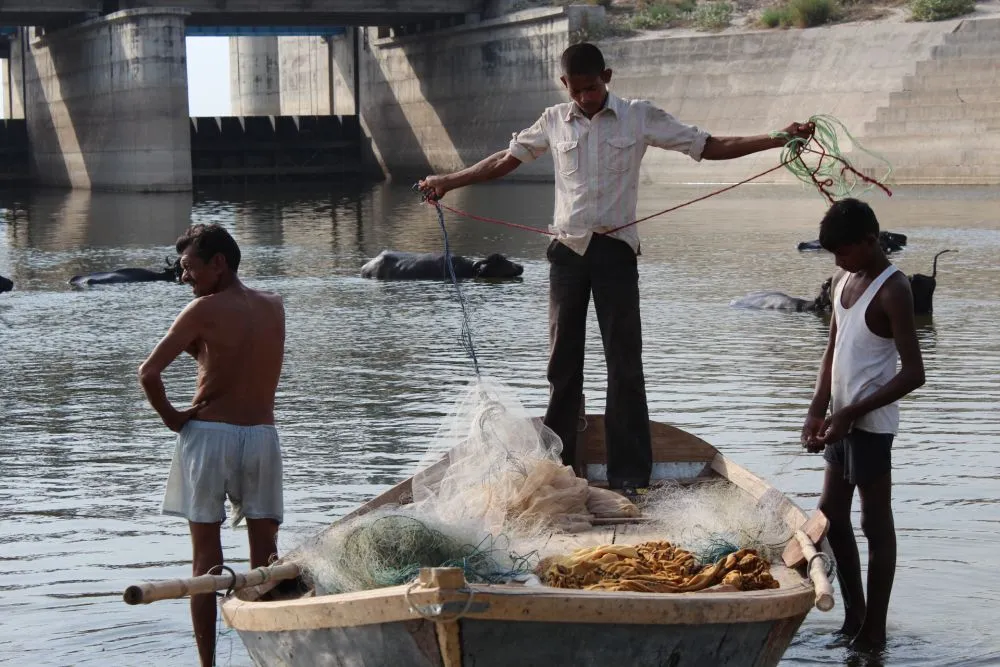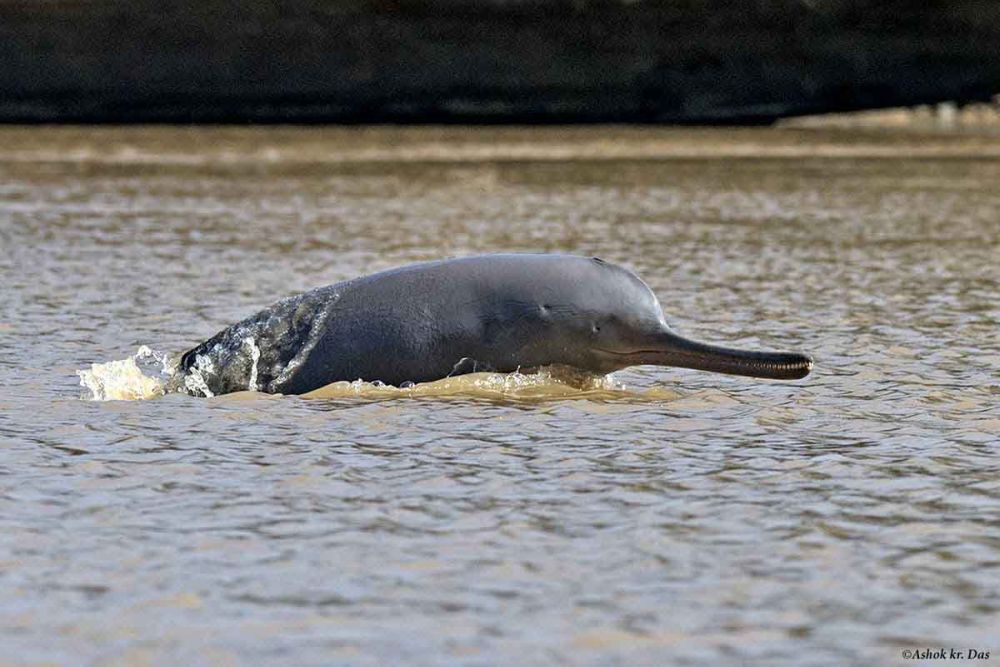Plight of Ganga: Discarded Fishing Nets Threaten Wildlife in River Ganges
The Ganges River is a sacred water body for Indians, which not only nourishes the lands of the subcontinent but gives life to many marine species as well. Over the years, however, the holy river has been a victim of relentless pollution by means of discarded animal carcasses, holy waste from temples, and other human activities. Moreover, the plastic pollution piled upon the problem to worsen it further. According to a recent study, plastic pollution from discarded fishing nets in the Ganges River threaten the endangered wildlife in the river.
An international team including researchers from the Wildlife Institute of India (WII) conducted a study, which was published in the journal Science of The Total Environment, to detect the levels of plastic pollution in the river.

Discarded fishing nets in River Ganges threaten the wildlife | Image: Gangapedia
The team surveyed the river along its length, from its origin in the Himalayas in India to Bangladesh where it meets the sea. High levels of discarded fishing gear were found in the river, especially near the sea – threatening the wildlife such as the critically endangered three-striped roofed turtle and the endangered Ganges river dolphin.
The researchers noticed that fishing nets, made of plastic, were the most common item found in the waters. Interactions with local fishers revealed that the reason for the high rates of fishing equipment discarded in the river is driven by short gear lifespans and lack of proper disposal systems.
Also Read: 50+ Disturbing Images Depicting Filth of Varanasi and River Ganges
The Ganges River sustains some of the world’s largest inland fisheries, but no research has been ever done to measure the environmental impact of this industry. Ingestion of plastic items can be fatal to the wildlife and that is no news.
Sarah Nelms from the University of Exeter in the UK, said that the threat assessment was focused on the entanglement of marine species in plastic items, which is known to injure and kill a wide range of animals. She noted that most fishermen mend and repurpose nets, and finally offer them to the river. Much of this discard is based upon the belief that the river cleans it away; which begs the necessity to raise awareness on plastic and river pollution in the region.

This pollution threatens the critically endangered three-striped roofed turtle and the Ganges river dolphin | Image: Ashok Kr. Das
To identify the species most at risk, the team used a list of 21 river species of “conservation concern” identified by the WII. They collaborated existing information on entanglements of similar species worldwide with the new data on waste levels of discarded nets found in the Ganges River.
This pollution is not only dangerous for marine species dwelling in the river, but for everyone who uses Ganges water in one way or the other. It could lead to various diseases, some of which could prove deadly. While the Indian government has been beaming up with pride after claiming that River Ganges has become pollution-free, this new study comes as a slap.
The hard-hitting truth indicates that no matter how much religious significance you give to an element, it cannot survive unless you make efforts, actual efforts, to keep it so. And the dying rivers of India are no different – the citizens need to work hard to keep these waterbodies alive before it’s too late!


